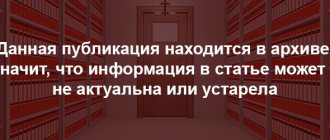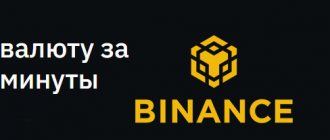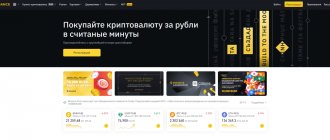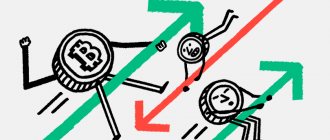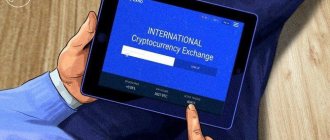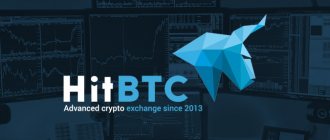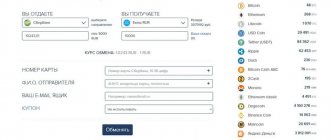olegas Aug 21, 2022 / 196 Views
From a purely technical point of view, exchange trading (or trading on the Forex market) is the purchase and sale of various financial instruments (they try to buy cheaper and sell more expensive). Of course, the opening of a particular position must be preceded by a whole range of measures, including a thorough analysis of the market, determining the size of the position and strategies for opening and closing it.
The strategy for closing a position, in the most general case, includes determining the levels for limiting losses and taking profits and, accordingly, placing stop loss and take profit orders. It can be based on the readings of technical indicators or on a visual assessment of the chart (Price Action method). It may also include more than one closing point (when a position is closed in full at once), but have a complex step-by-step closing algorithm (when a position is closed in parts, in certain volumes and at certain points in time).
The position opening strategy determines when and how a trader enters a position on a particular financial instrument. As a result of the analysis of the current market situation, the most favorable moment to enter the market is determined. Moreover, this moment will not necessarily coincide with the current moment in time, but may be at a certain point in the future.
Such a delayed opening is usually due to the fact that the trader is waiting for confirmation of one or another probable event, for example, a breakdown of a resistance level. If the level is actually broken through (and the price reaches the value that will be specified in the pending order), then the position will open automatically without the participation of the trader.
An order is an order to a broker to perform a particular operation (open or close a position of a certain size at a certain price).
That is, he will not have to sit at the monitor all night waiting for further developments in the market situation. If this situation develops according to one scenario, then the corresponding pending order will be triggered, and if according to another, then the position will not be opened (or it will open according to another pending order set by the trader).
When a position is opened at the current moment in time, we are talking about a market order (Market Order), and when its opening is postponed for a certain period in the future, then we are talking about pending orders (Pending Order). Pending orders, in turn, are divided into two main categories:
- Limit orders;
- Stop orders.
We will now talk in detail about the first of them (limit orders).
There are two main types of limit orders:
- Buy Limit;
- For sale (Sell Limit).
Let's take a closer look at each of them.
Buy Limit Order
This is a kind of application to purchase an asset at the stated price or even lower . After all, the buyer is interested in buying at the lowest possible price. Pending Buy Limit orders are used only in cases where the trader believes that the price will drop to a certain level, but upon reaching it it will rise. In other words, a limit order is a hope for the price to rebound upward from a strong support level. Visually it looks like this:
Figure 1. Buy Limit order
Positive sides
The use of limit order allows a trading participant to obtain significant advantages in his work. By working with them, a trader can get significant time savings, since there is no need to wait for the desired price, for example, when it bounces from a support/resistance level. In addition, limit order minimizes the risks of slippage. This is a guarantee of accuracy of execution at the price stipulated in it.
The limit order is located on the server of the broker company. For this reason, it will work even when the trader’s computer is turned off.
Sell Limit Order
A pending Sell Limit order is relevant in cases where a trader hopes that the price will rise, reach a certain resistance level (this is where our Sell Limit order will be placed), then the price will bounce back from it and go down. It is profitable for a trader to purchase a pair at the stated price, which will be higher than the current one.
Visually it looks like this:
Figure 2. Sell Limit limit order
Note that a Forex limit order allows you not only to open a position, but also to close it with a profit . That is, a Buy Limit pending order allows you to exit a short (sell) position, while a Sell Limit order allows you to exit a long (purchase) position.
Those who use limit orders within the exchange provide some liquidity. Allows other traders to make transactions. After all, he agrees with the prices stated in limit orders.
If we explain this process manually using the example of a real market, then those who placed limit orders are shopkeepers. They put price tags on all their products. And buyers have the right to buy or not buy their products at the stated prices.
Cryptobots for working with orders
Limit orders are present in many cryptocurrency bots, we list the most popular ones:
- RevenueBOT. The order is placed by the exchange in the order book at the price set by the user. This means that it is not executed immediately, but only after finding a suitable counter order at a given or more favorable price.
- Cryptohopper. When the bot is set to buy a new position, it creates a limit order for the desired exchange. When this order is filled, a position is created and placed in the Open Positions list. You can cancel orders that are open here.
- GUNBOT. In addition to the regular limit order, the PRE_ORDER function is available for leveraged trading on the Bitmex exchange. This feature allows you to get ahead of the order book to increase the likelihood that limit orders will be filled.
How to place a limit order on Forex in MT4?
Next, we will give a step-by-step plan for placing a limit order like Buy Limit:
- We open a new order using the F9 hotkey or through the “New Order” .
- Select a currency pair and volume.
- The type must be selected “Pending order” . You will then be given the option to select the type of pending order. We need a Buy Limit.
Figure 3. This is how a pending Buy Limit order is placed.
- Next, you will need to indicate the price at which the Buy Limit deferment will be executed. To save time, simply take the current price and subtract 30 points from it. Most Forex brokers have these rules. Unfortunately, it will not be possible to set a delay at a shorter distance to the current price.
- Don't forget about Stop Loss and Take Profit. Where to install them is a purely personal matter. It all depends on the trading system and the trader’s own preferences.
- You can also set the expiration date and time of the limit order.
What do Maker and Taker mean on Binance
Taker: When you place an order that trades immediately, either by partial fill or full fill, before hitting the order book , those trades will be taker trades.
Trades from market orders are always accepted because market orders never go to the order book. These trades "take off" the volume of the order book and are therefore called "buy-in".
Limit IOC and Limit FOK orders (available via API) are also always accepted for the same reason.
Creator: When you place an order that partially or fully enters the order book (for example, a limit order placed through the trading screen on binance.com), any subsequent trades originating from that order will be considered a "creator".
These orders add volume to the order book, helping to "create the market", and are therefore called the "maker" for any subsequent trades.
Note. The Limit GTC order (available via API) can be traded as a buyer and a producer.
Register a Binance AccountOpen a Demo Account
How to resolve order problems (exceptions) on Binance
1. If your order has not been completed:
- Please check the price of the selected order in the open orders section and check if it matches an opposing order (bid/ask) with that price level and volume.
- If you would like to expedite your order, you may consider canceling it in the open orders section and submitting a new order with a more competitive price. For quick settlement, you may also consider using a market order.
2. If you encounter other issues, such as not being able to cancel your orders or coins not being credited to your account after a successful transaction, please contact our customer service team and provide screenshots that document:
- Order details;
- Error code or exception message
When are pending orders not needed?
Andrey Podolyan advises not to use pending orders only if there is confidence in the growth of a certain asset and its purchase is made with the goal of making a profit in the long term. Vitaly Kirpichev shares the same opinion, but in any case, when opening a long-term position, he recommends answering the question of when to exit this position and under what conditions.
“There are different tactics in trading, some work with stop orders, some without, this does not mean that you cannot make money by trading without stop orders. Long-term investors usually trade without this instrument, active traders use pending orders, this is a matter of tactics ,” added Podolyan.
Take Profit #
Take Profit is designed to make a profit when the price of a financial instrument reaches the predicted level. Execution of this order results in the complete closure of the position. It is always associated with an open position or a pending order. An order can only be placed together with a market or pending order. When checking the condition of this order, the Bid price is used for long positions (the order is always placed above the current Bid price), and when checking short positions, the Ask price is used (the order is always placed below the current Ask price).
Orders that work when the market opens and closes
By adding an expiration limit to a market order we get:
- MOO (Market-On-Open). This type of market order can only be executed at the opening of the trading day. Execution is guaranteed subject to availability of liquidity.
- LOO (Limit-On-Open). Like MOO, LOO can only be executed at the beginning of the trading day. Unlike MOO, limit orders of this type allow you to set price instructions. Performance is not guaranteed.
- MOC (Market-On-Close). Similar to MOO, but a market order can only be closed at the close of the trading day. Execution is guaranteed subject to availability of liquidity.
- LOC (Limit-On-Close). Similar to LOO, but a limit order can only be closed at the close of the trading day. Performance is not guaranteed.
What is a market order?
A market order is essentially the most basic form of a trader's order and is an instruction to buy or sell a cryptocurrency at the best price currently available.
If you go to a cryptocurrency exchange and want to buy something right now, you go to the seller with the best price available and make a trade. Common among beginners, this type of order is often considered the simplest. It can be convenient when you just want to quickly enter or exit a position with sufficient liquidity.
Please note that users placing market orders are considered "takers" as these orders are instantly matched and as a result "take" liquidity from the order book. On the other side of the deal are the “makers” - we’ll talk about them right now.
Channels and chats in Telegram
PLANWORLD CRYPTO if you love cryptocurrencies, then this Telegram channel is for you. Only practical advice, when to buy, what to buy, which coins are better, all this and not only on my Telegram channel. And most importantly, as always, it’s free
Chat Cryptocurrency all cryptocurrency lovers are welcome!
HYIP chat If you are familiar with such things as H-Script, GoldCoders, HSbuilder, we are waiting for you in our HYIP admins chat.
2 comments to “Orders on Binance. Stops, limits, OCO (Binance spot)”
I had 30 orders open, the next day half were closed by stops, how can I quickly determine which ones were closed? The closing date is not indicated, in its place is only the order opening date in the history, maybe I’m missing something?
There is an expired order, the amount is frozen and inactive, what should I do?
Source
Effective approach
By using a stop order, you can apply a break-even trading strategy, but for this you need to have a good understanding of the operation of trading terminals, Podolyan emphasizes.
As an example, the expert cited a situation in which a trader bought Bitcoin at $50 thousand, and then the price of the digital coin reached $55 thousand. In this case, Podolyan recommends setting a “protective” stop order at $52 thousand in order to be guaranteed to make a profit and not go into negative territory, even if Bitcoin falls in price.
“I often use this method to protect my positions ,” added the CEO of Cryptorg.exchange.
Discipline is very important in trading, and if you have opened a position, you should always use stop orders, recommends Vitaly Kirpichev.
Let's get acquainted with the interface of the Binance exchange - 3
Sign in to your account. To do this, on the main page of the Binance exchange in the top panel, click on the LOGIN button.
In the empty fields of the form, enter the data you provided during registration - email address/mobile phone number, password.
Then pull the slider to the right to align the puzzle. You are now in your personal account.
In the top panel, click on the Trade drop-down menu, select Classic. It is a simple and user-friendly interface designed for beginners.
It has several panels:
Binance Announcements
In this line, the exchange publishes all important events related to the operation of the site.
Pair trading volume for 24 hours
Here you can see the percentage of price changes over the last 24 hours for the coin you have chosen, as well as the lowest and highest prices for the day.
Sell order book
This panel is also called the “red glass”, since the orders in it are highlighted in red. When sellers want to sell their coins, they create a sell order at the desired price. It appears in a red glass. You can buy these coins from sellers by selecting an order at a price that suits you. Sell orders with the best price are located at the bottom of the order book.
Buy order book
This panel is also called the “green order book”, since the orders in it are highlighted in green. When buyers want to buy coins, they create a buy order at the desired price. It appears in a green glass. If you wish, you can sell these coins to a buyer (if you have them in stock) by selecting an order at a price that suits you. Buy orders with the best price are at the top of the order book.
Japanese candlestick chart and market depth
Here is a graphical representation of the price movement, which is reflected in Japanese candlesticks (red and green bars with thin “tails”). On the chart you can see how the price is currently behaving - rising, falling, or standing still.
In the Time field, you can select any time period (“timeframe”)—minutes m, hours H, day 1D, week 1W, month 1M. If you need to see price movement hourly, choose the H timeframe (hours). If per day - timeframe 1D (day).
In the same Time field on the right there is a Depth button - this is a graphical representation of order books for buying and selling.
Trade type: Spot/Cross 3x/Isolated 10x (Spot/Cross Margin/Isolated Margin)
Spot (spot trading) - exchange of goods (i.e. coins) for money here and now. This is the most familiar type of trading for us. It is the safest because you only trade what you have in stock. After registering an account, you are by default in the spot market.
Cross 3x/Isolated 10x (cross margin/isolated margin) - this type of trading refers to margin trading using borrowed funds. The trader borrows funds from the exchange, using his own deposit (account) as collateral. The exchange charges interest for using a loan. The loan amount can be three times your account (3's), five times (5's) or ten times (10's).
Order types: Limit/Market/Stop-limit (Limit/Market/Stop-limit)
Order - an order to buy (sell) coins on the exchange. You create them yourself in the trading panel, indicating the number of coins and their price.
If you are satisfied with the current price for a coin, you can create an order to buy (sell) at the market price. It will be fulfilled instantly.
If you are not satisfied with the current price for a coin, you want to buy (sell) it cheaper (more expensive), you need to create a limit order. It will be placed in the order book (see points 3 and 4): for sale in the red order book, for buy in the green order book. It will be executed when the price reaches the one specified in your limit order.
Let's say you bought good coins and want to sell them at a certain price. To do this, place a limit sell order. Next, wait until the price reaches the one you specified in the order, and it will work. However, the price began to fall sharply, and you still did not have time to sell the coins. To protect your account from such situations and losses, a trader can place a stop order (stop limit) in advance, indicating an alternative sale price (for example, at breakeven).
BUY (buy)
In this panel you can place a limit, market or stop buy order.
Buying with a limit order
To create a limit order, select the desired trading pair (step 10). Then select the Limit tab. In the form, fill in the empty fields in the following order:
- Price - desired purchase price;
- Amount (quantity) - the number of coins you want to buy;
- Total – the total amount of the limit order will appear here.
Practice
From a systemic point of view, it is important to flexibly but accurately define the basic structure for all types of orders. In Erlang this can be done using entries:
-record(exchange_order, { id :: binary(), orig_id :: binary(), ticker :: binary(), owner :: binary(), trader :: binary(), type :: non_neg_integer(), side : : non_neg_integer(), time_in_force :: non_neg_integer(), price :: binary(), trigger_price :: binary(), qty :: binary(), orig_qty :: binary(), created_ts :: non_neg_integer(), updated_ts :: non_neg_integer(), deals_history :: [#exchange_deal{}], linked_orders :: [#exchange_order{}], opts :: map() }).
Order identification
After the order reaches the exchange, it is assigned an internal system identifier - the id field. To improve the user experience when coordinating the exchange with external systems, it is necessary to allow the system external to the exchange to assign its own id to the order being created - the orig_id field. This will make it possible to request orders both by id and orig_id and will allow you to avoid additional mapping of orders in an external system.
Ownership of the order
Let's build into the system the ability to create intermediaries. Orders can be submitted directly from trading participants, or from an intermediary who provides services to clients who do not have direct access to the exchange.
In the case of a direct order, the owner and trader are the same.
Instruction coding
Let's look at the remaining fields. Two fields are used to encode price instructions: price – limit price for limit orders and tirgger_price – trigger price for custom types. For example, for stop orders this field will encode the stop price.
To encode the volume we use qty and qty_orig. Qty_orig specifies the initial volume of the order, and qty – the volume of the order during its execution.
In order to have accurate information about partial executions, the deals_history array is needed. With its help, after the order is completely filled, you can calculate, for example, the average price of the completed order.
The linked_orders field is required to encode information about linked orders for OCO and OSO.
To be able to expand the system without changing the exchange_order entry, we will add the opts field - a dynamic dictionary.
